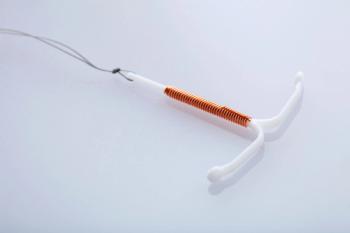
After decades of disappointments, a new generation of male contraceptives is under development and expected to enable men to share the contraceptive burden with their female partners.

After decades of disappointments, a new generation of male contraceptives is under development and expected to enable men to share the contraceptive burden with their female partners.

Most women and men did not even try to discuss or obtain contraception predeployment, a finding that the authors said warrants further investigation.

Despite the popularity of birth control pills and their decades of safe use and research people still face barriers to birth control pills, said senior author Sarah Baum.

Women on Medicaid with opioid use disorder (OUD) who use medications for opioid use disorder (MOUD) are more likely to use contraception and to undergo female sterilization than peers not prescribed MOUD, according to a study in Contraception.

Chromosomal abnormalities in infertile couples who use assisted reproductive technology (ART) do not appear to impact cumulative clinical pregnancy or live-birth rates, according to a study published in the Annals of Medicine.

The rate of unintended pregnancies throughout the US military declined significantly since 2005, according to a study published in Contraception.

No “double disadvantage”

Service disruptions at the start of the COVID-19 pandemic altered and exacerbated geographic disparities in access to abortion care in Louisiana, according to a study published in Contraception.

The fact that copper-containing intrauterine devices (Cu-IUDs) can increase bleeding and discontinuation rates compared to levonorgestrel-releasing IUDs (LNG-IUDs) does not mean clinicians should steer patients toward the latter, according to a review published in BMC Women’s Health. Due to high satisfaction rates with both devices, authors recommend letting patients choose based on their needs and preferences.

The risk of vulvovaginal candidiasis (VVC) during pregnancy tends to peak in the third trimester, according to a review published in Infectious Diseases in Obstetrics and Gynecology. Risk factors range from contraceptive and antibiotic use to patients’ hygiene and overall health.1 With data regarding VVC and pregnancy incomplete and often conflicting, review authors say, more research is needed.

Eradicating vaginal biofilms involving Candida species requires synergistic combinations of antifungal drugs with pre-, pro-, post-, and synbiotics, according to a recent Frontiers in Microbiology review.1

Among minimally invasive treatments for uterine fibroids, uterine artery embolization (UAE) produces greater fibroid shrinkage and more complications than MRI-guided HIFU (MRIgHIFU), according to a study in BMC Women’s Health.

Using bactericidal soaps and sex toys and having anal sex were associated with higher rates of bacterial vaginosis (BV) and vulvovaginal candidiasis (VVC), according to a study in RBGO Gynecology and Obstetrics (Revista Brasileira de Ginecologia e Obstetricia). However, study authors caution, identifying these associations do not establish causality.

Published: January 19th 2023 | Updated:

Published: November 17th 2022 | Updated: